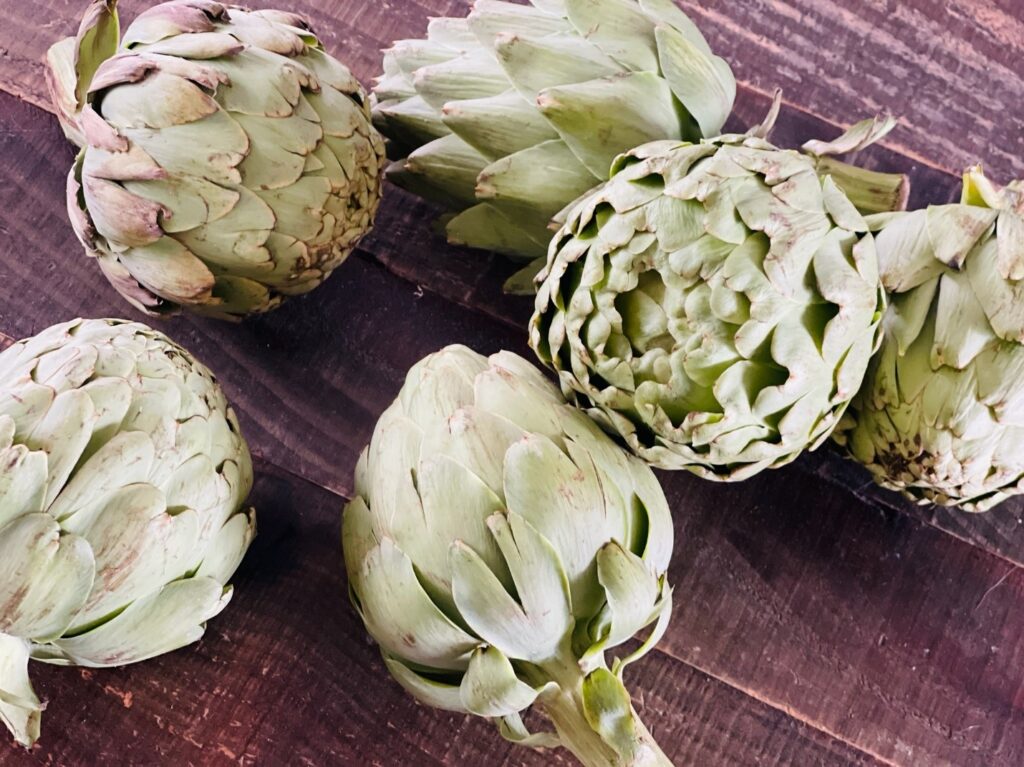How to Properly Cook and Prepare an Artichoke

Just like there are many ways to cook an egg, there are multiple ways to properly cook an artichoke. Before I get too ahead of myself, it is completely natural to be intimidated by the artichoke. It isn’t something you would be able to take one look at and instantly know where to even begin. I have always been kind of intrigued by the artichoke and enjoy using it as an ingredient in various dishes and even as a salad topping, but I had never prepared it myself.
Until now.
While I have never seen an artichoke plant in person, these are typically in season the summer months (late July through August). They start just like any other vegetable: from a seed. They take roughly 90 – 100 days to become fully mature. They grow on a long stem and resemble blossoming flowers. These annual plants typically produce six to eight artichokes from a single plant. Artichokes are not only delicious, but they’re antioxidant-rich and are also good sources of fiber, vitamin C, vitamin A, vitamin K, magnesium, and iron.
Ways to Cook an Artichoke
I did some research and discovered you can boil, steam, bake, and even fry an artichoke. I tried each of these methods, and while I’m pretty sure baking is a close second, steaming is the method I think reigns supreme.
Boiling the artichoke, for me at least, made the artichoke get bogged down with water. Frying made it rather tough, and well, as stated, baking was pretty solid. But steaming provided the right texture and allowed me to infuse some flavors into the recipe.
To begin, it is best to trim the thorns (pointy edges) off each bract (outer leaf). This is a tedious process, but it’s worth it to avoid having to pull on the prickly edges. I have also heard the ends of the artichoke are somewhat bitter, so aside from being more aesthetically pleasing and easier to eat, there is that too.
RELATED: Collagen Doesn’t Work (Unless…)
Once you cut into an artichoke, you will see there is the choke and the heart. These are the most widely known parts of the artichoke and what you will traditionally see used in recipes. While the entire artichoke is technically edible, the prickly “fuzzy” part that surrounds the heart can be unpleasant and may be a choking hazard. I would say the taste of the bracts is similar to celery or maybe asparagus. The heart has a refreshing taste—similar to the bract but more citrusy like a lemon.
I generally like to steam and boil the artichokes whole, but for frying or baking, I prefer to cut them in half. Some folks like to stuff them with cheeses or herbs and spices.
As mentioned, steaming is my preferred cooking method, and I set up my steam pot with lemon and garlic to kind of infuse the flavors into the artichoke. They don’t take too long to steam—around 25 – 30 minutes. You will know they are done when you can gently pull a bract from the artichoke easily.
These are best enjoyed with some fresh lemon and/or butter or with another dipping sauce. Just pull apart the bract and enjoy! Any outer part of the bract that’s too tough or too bitter tasting can simply be discarded.






